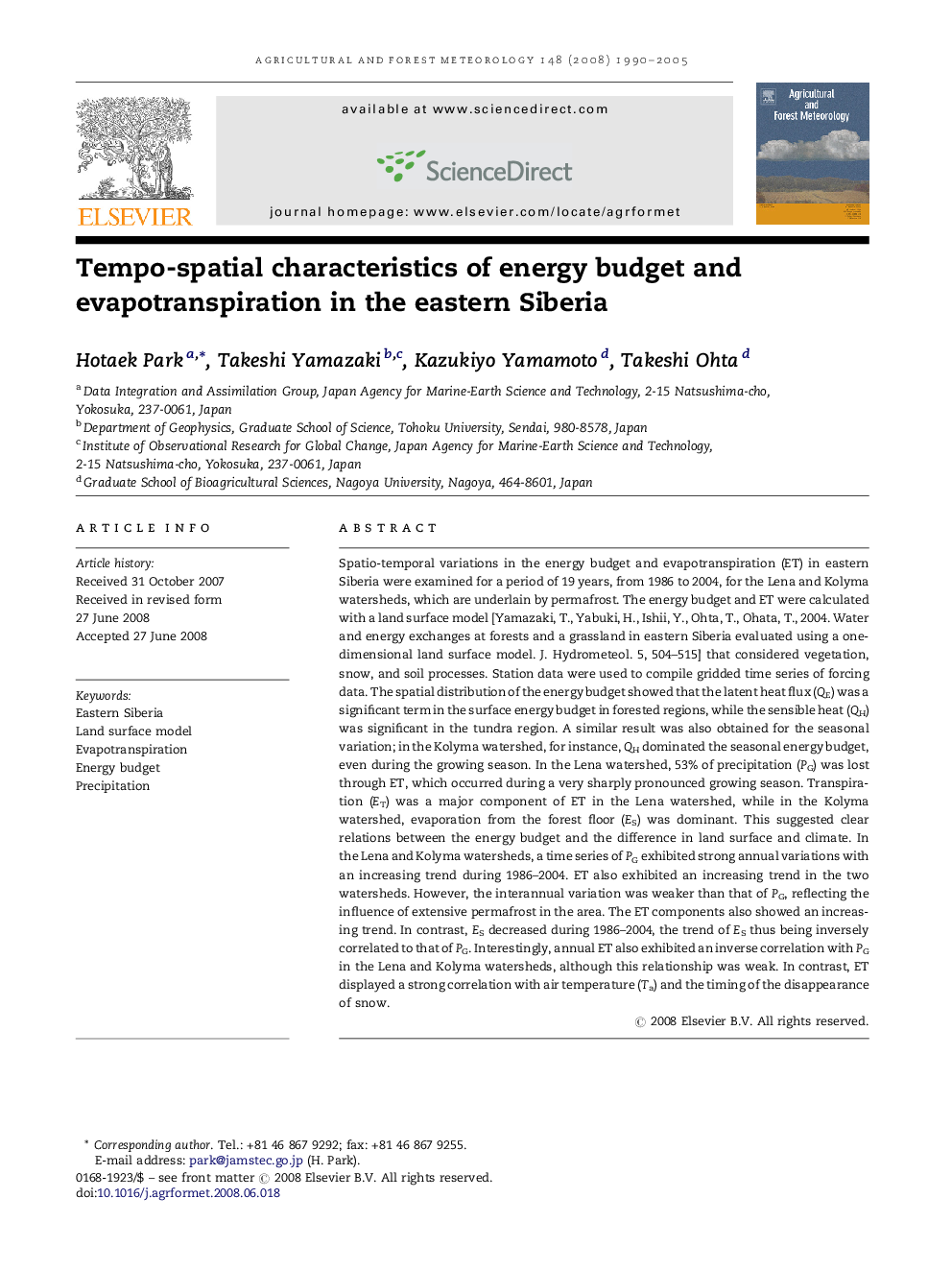| Article ID | Journal | Published Year | Pages | File Type |
|---|---|---|---|---|
| 82365 | Agricultural and Forest Meteorology | 2005 | 16 Pages |
Spatio-temporal variations in the energy budget and evapotranspiration (ET) in eastern Siberia were examined for a period of 19 years, from 1986 to 2004, for the Lena and Kolyma watersheds, which are underlain by permafrost. The energy budget and ET were calculated with a land surface model [Yamazaki, T., Yabuki, H., Ishii, Y., Ohta, T., Ohata, T., 2004. Water and energy exchanges at forests and a grassland in eastern Siberia evaluated using a one-dimensional land surface model. J. Hydrometeol. 5, 504–515] that considered vegetation, snow, and soil processes. Station data were used to compile gridded time series of forcing data. The spatial distribution of the energy budget showed that the latent heat flux (QE) was a significant term in the surface energy budget in forested regions, while the sensible heat (QH) was significant in the tundra region. A similar result was also obtained for the seasonal variation; in the Kolyma watershed, for instance, QH dominated the seasonal energy budget, even during the growing season. In the Lena watershed, 53% of precipitation (PG) was lost through ET, which occurred during a very sharply pronounced growing season. Transpiration (ET) was a major component of ET in the Lena watershed, while in the Kolyma watershed, evaporation from the forest floor (ES) was dominant. This suggested clear relations between the energy budget and the difference in land surface and climate. In the Lena and Kolyma watersheds, a time series of PG exhibited strong annual variations with an increasing trend during 1986–2004. ET also exhibited an increasing trend in the two watersheds. However, the interannual variation was weaker than that of PG, reflecting the influence of extensive permafrost in the area. The ET components also showed an increasing trend. In contrast, ES decreased during 1986–2004, the trend of ES thus being inversely correlated to that of PG. Interestingly, annual ET also exhibited an inverse correlation with PG in the Lena and Kolyma watersheds, although this relationship was weak. In contrast, ET displayed a strong correlation with air temperature (Ta) and the timing of the disappearance of snow.
